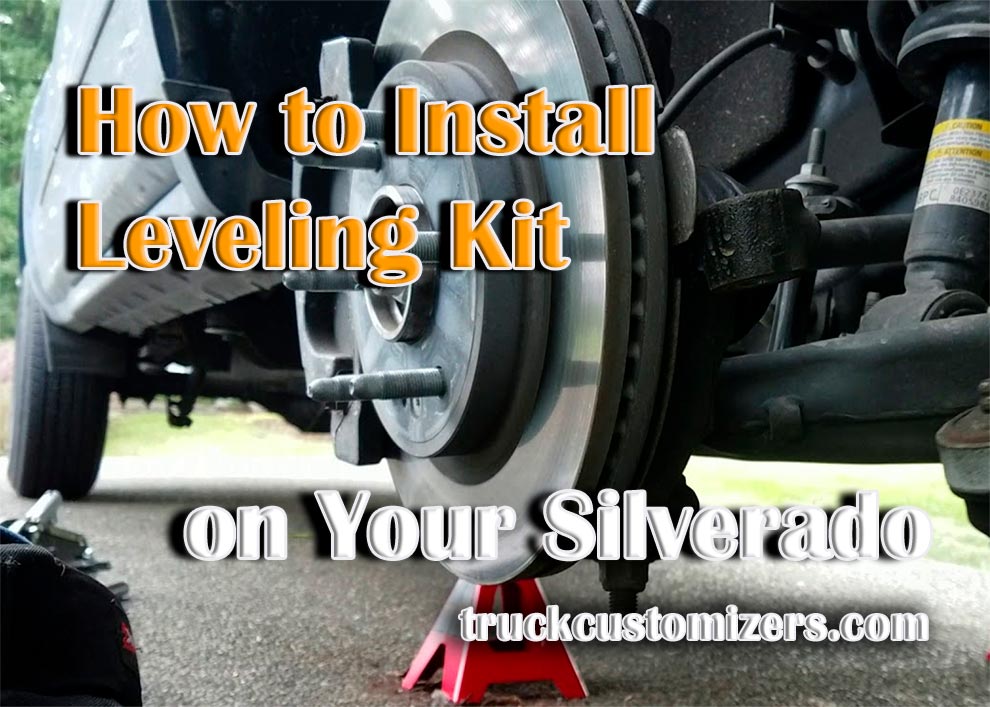
Lift Kit Installation: Navigating the Landscape for the Best Deal
The allure of a lifted vehicle is undeniable. It represents a certain ruggedness, a willingness to explore, and a statement of personal style. Beyond aesthetics, a lift kit can significantly improve off-road capabilities, allowing for larger tires, increased ground clearance, and enhanced suspension travel. However, the decision to install a lift kit is a serious one, involving technical expertise and financial investment. This guide provides a comprehensive overview of lift kit installation, emphasizing the crucial importance of obtaining multiple quotes to secure the best possible price.
Understanding the Scope of Lift Kit Installation
Lift kit installation is not a simple bolt-on procedure. It involves modifying a vehicle’s suspension system to increase its ride height. The complexity of the installation varies depending on the type of lift kit and the vehicle in question. There are several types of lift kits, each offering different degrees of lift and requiring varying levels of installation effort:
- Leveling Kits: These are the most basic type, typically raising the front of the vehicle to match the rear, often by a small amount (1-2 inches). Installation is usually straightforward.
- Suspension Lift Kits: These kits replace or modify suspension components, such as springs, shocks, and control arms, to achieve a more significant lift (2-6 inches or more). This is the most common type, and installation can be complex.
- Body Lift Kits: These kits raise the vehicle’s body relative to the frame. They are generally less expensive and easier to install than suspension lifts, but they don’t improve off-road performance as much.
- Long Arm Lift Kits: These are the most comprehensive and expensive type, replacing factory control arms with longer, more robust arms. They offer superior articulation and off-road performance, but installation is highly complex and requires significant expertise.
The installation process itself involves removing existing suspension components, installing the new lift kit components, and then aligning the vehicle. This is a critical step, as proper alignment ensures optimal handling and tire wear. Due to the complexity and the potential for safety issues if done incorrectly, lift kit installation is usually best left to experienced professionals.
Why Multiple Quotes are Essential for Lift Kit Installation
The cost of lift kit installation can vary significantly depending on several factors, including the type of kit, the vehicle, the labor rates of the shop, and the shop’s location. By obtaining multiple quotes, consumers can compare prices, assess the quality of service, and ultimately, make an informed decision that aligns with their budget and needs. This is a crucial step in getting the most value for your money. Failure to do so could lead to overpaying or receiving subpar service. The process of getting quotes can also help you understand the different options available and the different approaches that installers might take.
Here’s why getting multiple quotes is so important:
- Price Comparison: Labor rates, parts costs, and overall pricing can vary significantly between different shops. Comparing quotes allows you to identify the most competitive pricing.
- Quality Assessment: The quotes can also reveal insights into the quality of service provided by different shops. Some shops may include higher-quality parts or offer more comprehensive services, which may be reflected in the price.
- Transparency and Trust: A reputable shop will be transparent about their pricing and services. Multiple quotes allow you to compare the level of transparency and build trust with the installer.
- Negotiating Power: Having multiple quotes gives you leverage to negotiate the price with different shops.
The Process of Obtaining Multiple Quotes for Lift Kit Installation
Obtaining multiple quotes requires a systematic approach to ensure you get accurate and comparable information. Here’s a step-by-step guide:
- Research and Identify Potential Shops: Start by researching reputable auto shops in your area that specialize in suspension work and lift kit installation. Read online reviews, check their websites, and ask for recommendations from friends, family, or online forums.
- Specify Your Needs: Before contacting shops, determine your specific needs. What type of lift kit are you considering? What are your goals for the vehicle (e.g., off-road performance, aesthetic changes)? Knowing your requirements will help you provide clear information to the shops and get accurate quotes.
- Contact Shops and Request Quotes: Contact at least three to five shops and provide them with the details of your vehicle and your desired lift kit. Be as specific as possible, including the make, model, and year of your vehicle, as well as the type and size of lift kit you’re interested in.
- Compare Quotes and Ask Questions: Carefully compare the quotes you receive. Pay attention to the following factors:
- Total Cost: This includes the cost of the lift kit, labor, and any additional fees.
- Parts Included: Make sure the quote specifies the brand and model of the lift kit and other components.
- Labor Costs: Understand the hourly rate and estimated labor time.
- Warranty: Inquire about the warranty on the parts and labor.
- Alignment: Ensure the quote includes a wheel alignment.
Don’t hesitate to ask questions if anything is unclear. Request clarification on any discrepancies or concerns you may have.
- Visit the Shops: If possible, visit the shops to assess their facilities, talk to the technicians, and get a feel for their professionalism. This will help you make a more informed decision.
- Make Your Decision: Based on the quotes, your research, and your interactions with the shops, make your decision. Consider not just the price but also the quality of the parts, the experience of the technicians, and the reputation of the shop.
Avoiding Common Pitfalls in Lift Kit Installation
The process of lift kit installation, while exciting, can present some potential pitfalls. By being aware of these, you can minimize risks and ensure a satisfactory outcome:
- Choosing the Wrong Kit: Selecting a lift kit that is not appropriate for your vehicle or your intended use can lead to poor performance, handling issues, and even damage. Research thoroughly and consult with experts to choose the right kit.
- Ignoring Alignment: Proper wheel alignment is crucial after a lift kit installation. Failure to align the vehicle can result in uneven tire wear, poor handling, and safety hazards. Make sure the quote includes an alignment.
- Using Cheap Parts: Opting for low-quality lift kit components to save money can be a false economy. Cheap parts may fail prematurely, leading to costly repairs and potential safety issues.
- Skipping the Break-In Period: After the installation, allow for a break-in period, following the manufacturer’s recommendations. This allows the suspension components to settle and function properly.
- Not Checking for Aftermarket Compatibility: Ensure your lift kit is compatible with any other aftermarket components you have installed, such as larger tires or aftermarket bumpers.
Ensuring Long-Term Satisfaction with Your Lift Kit Installation
Once the lift kit installation is complete, it’s crucial to maintain your lifted vehicle to ensure its longevity and performance. Here are some tips:
- Regular Maintenance: Follow a regular maintenance schedule, including checking the suspension components, lubricating moving parts, and inspecting for any signs of wear or damage.
- Tire Pressure: Regularly check and maintain the correct tire pressure for your tires.
- Alignment Checks: Have your vehicle’s alignment checked regularly, especially after off-road use.
- Professional Inspections: Consider having a professional inspection of your suspension system periodically.
- Off-Road Awareness: If you use your vehicle off-road, be mindful of the terrain and drive accordingly. Avoid excessive stress on the suspension system.
The Benefits of Professional Lift Kit Installation
While it might be tempting to attempt a DIY lift kit installation, the benefits of using a professional service often outweigh the potential cost savings, especially with the complexity involved. Experienced technicians have the knowledge, tools, and expertise to install the lift kit correctly, ensuring your vehicle’s safety and performance. Professionals also offer warranties on their work, providing peace of mind in case of any issues. Furthermore, they can provide valuable advice and recommendations based on your specific needs and vehicle. Ultimately, professional installation can save you time, prevent costly mistakes, and ensure a smooth and satisfying experience.
Conclusion: Making the Right Choice for Your Lift Kit Installation
Lift kit installation is a significant investment that can greatly enhance your vehicle’s capabilities and appearance. By following the steps outlined in this guide, particularly the critical step of obtaining multiple quotes, you can make an informed decision, secure the best price, and ensure a professional and satisfactory installation. Remember to prioritize quality, experience, and transparency when choosing a shop. With careful planning and execution, you can enjoy the benefits of a lifted vehicle for years to come. Choosing the right installer is as important as choosing the right lift kit itself. The choice to lift your vehicle is exciting, but the process of finding the right professional to install it requires careful consideration and research. The key takeaway is to compare your options to get the best value.
[See also: Choosing the Right Lift Kit for Your Vehicle]
[See also: Understanding Suspension Systems]
[See also: Lift Kit Installation Safety Tips]

